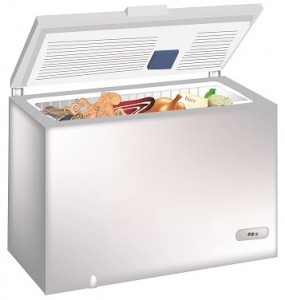Listen to me talk about this article in my podcast.
National Frozen Food Month is well underway, and promotions in the frozen foods department abound. If you watch carefully, you should be able to load up your freezer with numerous products over 50% off this month.But what do you do if you only have a small upper freezer, or a small side-by-side model? Do you have to pass up deals because your small freezer is already full? It may be time to consider the math: Should you purchase a stand-alone freezer?
The first financial consideration is the cost of the freezer itself. Chest freezers can be more economical than upright models.The smallest models can be purchased for under $200. The average 15 square foot chest-style model can be had for around $400.An upright model with the same volume is generally $150 to $200 more.
Besides shopping retail sales, ways for getting a freezer inexpensively are local secondhand stores, Craigslist, and local online yard sales. Before going this route, be sure you research freezers to decide what size, style, age, and price you’re aiming for. Older models will certainly be less expensive, but might also be less energy efficient, or more likely to break down sooner. Conversely, many freezers are very well made and were built to last. Take both possibilities into consideration when buying used. My wife and I bought our first used freezer for $35 this way.
You’ll also be able save a little money in upfront and operating costs by selecting a manual defrost model.While manual defrosting may only take a couple hours twice a year, working around ice accumulation (or possibly having to chop out food you may need) can be a bit of a hassle. My dear wife and I have had both types and we’re both very grateful to have an auto-defrost model.
On the positive side, it’s quite possible to get $300 worth of frozen food this month for $100 or less. If you’d normally pay shelf price for these products over the next couple months,you’ve already recouped $200of the investment you made in your new appliance.In the months ahead, a savvy shopper can generate $50-$80 profit (in the frozen food department alone) each month if they’re applying the best manufacturer coupons to the best local store sales.Within one year, you can recoup your expenses and enjoy the numerous benefits of your freezer.
The second financial consideration is operating costs — what it will cost you in electricity. Most freezer models’ operating costs range anywhere from $5 a month to $15 a month depending on age, energy efficiency of the model, size, how it’s operated, and the cost of your electricity.Chest freezers tend to be slightly more energy efficient.The drawback, however, is the difficulty in access to food. It’s easy for products to get buried and forgotten in a big chest freezer. So significant organization and inventory tracking is needed with a chest freezer.
Aside from the frozen food savings, if you have a hunter or a gardener in the family, you can save a great deal of money compared to your grocer’s meat or produce department.By having more frozen veggies on hand, (grown or purchased) you will spend less in the produce department as well.I’ve become a big fan of frozen veggies over fresh produce in many instances.I can generally get a much lower price (especially when out of season);my frozen veggies don’t spoil like fresh produce can; and some experts have pointed out the health benefits of frozen produce (especially if out of season).
While there’s nothing like fresh locally-grown fruits and vegetables, frozen fruits and veggies are generally picked when fully ripe and are flash-frozen, locking them in a relatively nutrient-rich state.Out of season produce is often picked before it is fully ripe – so it can make its hike to your store’s bins.Produce which does not fully ripen on the vine never develops its full spectrum of vitamins and minerals.
For more on this topic, I’m talking frozen foods (especially produce) and how to best use your freezer all this month on my podcast at SavingsAngel.com/podcast.



